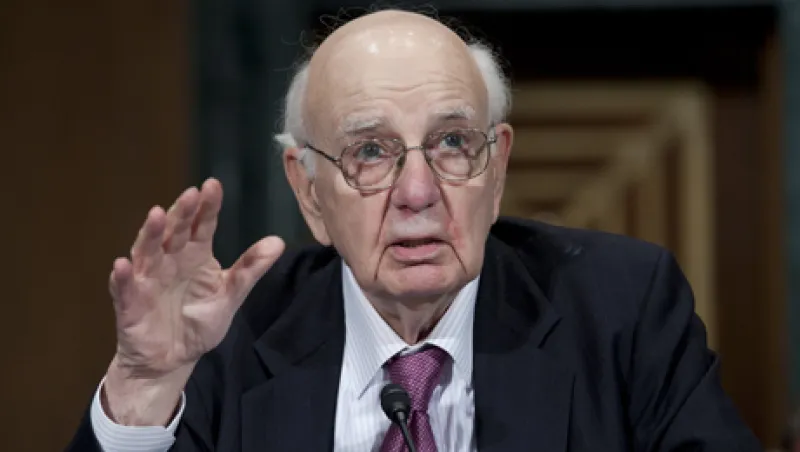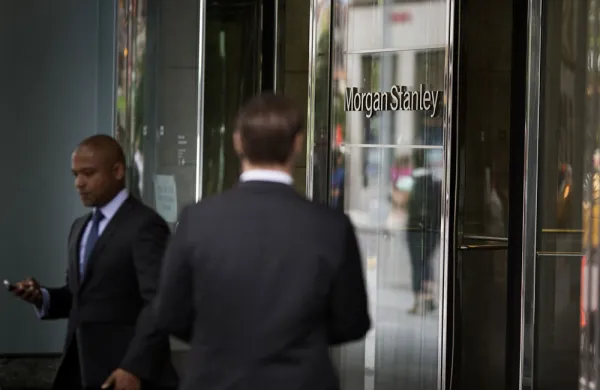Proprietary trading desks at banks are history due to the Dodd-Frank Act’s Volcker Rule, named for former Federal Reserve chairman Paul Volcker, which bans banks from making speculative trades with their own money. Star traders lead the exodus.
When Pierre-Henri Flamand and Morgan Sze launched their own hedge funds, they had a very big leg up — they’d been senior proprietary traders at Goldman Sachs. This helped them to raise billions of dollars for their funds.
But it’s easier to launch an emerging fund with the reflected glow of Goldman than to run it. Edoma Partners, started in November 2010 in London, is reportedly lagging behind rivals this year. The $1.8 billion fund, which makes bets on corporate events like mergers, bankruptcies and restructurings, was down 0.85 percent at the end of the first quarter, bringing its losses since inception to 3.1 percent. Goldman in 2010 depicted its proprietary trading as contributing about 10 percent of revenue.
According to the Credit Suisse Global Survey of Hedge Fund Investor Appetite and Activity, long/short equity and event-driven strategies saw the largest year-on-year declines in appetite, after a highly publicized, challenging year for both in 2011. “Our results also indicate the growing appeal of new or 'emerging’ managers,” the report notes, adding that interest in hedge fund launches and seeding opportunities has gained momentum, leading to larger initial ticket sizes and to more experienced portfolio managers taking the leap and striking out on their own. “Investors remain highly selective, focusing on pedigree and the institutional quality of the business.”
At J.P. Morgan, all prop desks have been transitioned to asset management. The bank is expected to seed the group with around $2 billion. At UBS, prop desk traders announced intentions to become a hedge fund in February, to start an Australia-based global macro hedge fund called MST Capital, to be led by Gerard Satur, current head of UBS macro strategic trading, former Morgan Stanley proprietary trader Jeremy Hooper and Matthew Mulcahy, a former Pimco executive.
Morgan Stanley is set to spin off its in-house quantitative Process Driven Trading unit by the end of 2012, retaining an option to buy a preferred stock position in the new company — PDT Advisors — for undisclosed terms. “PDT has generated an enviable track record within Morgan Stanley since its inception in 1993,” James Gorman, CEO of Morgan Stanley, told the press last January. The PDT unit has had only two down quarters since it was started in 1993. “We are delighted to continue our partnership with PDT as it looks to expand its business by taking on third-party investors.”
“If the bank likes a particular individual and his strategy, and if what he ran for them made money, when the prop desk is spun out, there’s a good possibility that the emerging fund will be seeded by the former employer, which will take a piece of the general partnership or management company,” says Richard Heller, a partner at Thompson Hine Investment Management Group.
“It’s a known risk and a modest investment for the bank,” he notes. His firm writes "side letters" for seeders. “As long as you disclose in offering documents that the seeder is getting a different fee structure,” this is perfectly legitimate. Banks also may be looking at the fees they can garner from becoming prime brokers to the new funds.
“As far as the bigger launches, it’s difficult for them to perform right away; they need time,” says Adam Guren, chief investment officer and co-founder of Hunting Hill Global Capital, which itself launched in February. Guren spent time at a prop desk, not with a bank but at First New York Securities, a privately held shop. “It was a mentorship where I was learning how to run a prop desk,” he explains.
“For one thing, when they were at their prop desks at banks, they had access to a lot more information,” Guren says. “And it takes six months to a year to see that your new business is running properly so that performance starts to pick up.”
“Flows go to organizations with the best brands,” says Donald Steinbrugge, managing partner at Agecroft Partners, in Richmond, Virginia. “The high-profile proprietary trading desks represent a small minority of hedge fund launches and are attracting a lot of money.”
In general, it’s very difficult to launch hedge funds. “You have to have at least $100 million when you launch,” he says, but if you have less, you have to use a seeder to get capital. There’s only been a few prop desk spin-offs from banks starting with hundreds of millions of dollars; the lower profile prop desk spin-offs are not attracting as much money and have to both generate returns and get a seeder. A select few small to medium funds with exceptional returns gain a brand and attention.”
Because of the challenges prop desk traders face when they spin off from brokerage houses, FRM Capital Advisors (FCA) is hanging back on investing in these emerging hedge funds. U.K.-based FCA, which bills itself as a dedicated seeding business for hedge fund managers, has yet to seed any recent proprietary trading desk spin-off, says Patric de Gentile-Williams, chief operating officer who joined FCA in 2007.
He concedes that such funds are attractive on paper, “Proprietary trading desks attract great people who are ruthlessly efficient and in many cases very talented money makers,” says Gentile-Williams. But FCA’s reluctance so far to jump into the fray has more to do with the challenges prop desk traders face in running a hedge fund business. “They need incremental skills to run their own businesses; in a perfect world, they’d be given a couple of years to run the hedge fund before having to be scrutinized.”
For Guren, two years of planning went into his emerging fund. “I went back to school, to Wharton, and continued to run a portfolio and to be a partner at First New York. I built a track record and then launched with money from friends and family. Now, I’m talking to seeders from institutions, family offices and funds-of-funds,” he says.
“In general, for the first six months of 2012, it’s been very hard to get money,” Heller puts in. Heller, Steinbrugge and Guren were panelists at an HFA symposium, Evolution of the Hedge Fund Industry in a Newly Regulated World, on July 25 in Manhattan, focusing on hedge fund regulatory matters. They subsequently discussed prop desk spin-offs by phone.
But investors may also be wary of emerging funds because the small outfits don’t have the same internal controls as a bank and find it hard to meet strict compliance demands from large clients.
The Credit Suisse survey reveals that only 52 percent of investors would be prepared to invest in a prop-trader spin-out, and only if it had a three-year track record.
“We read about the very large moves from prop desks to hedge funds,” says Ron Geffner, partner and head of the financial services group at Sadis & Goldberg. “The day-to-day prop trader has either left or is leaving, forming emerging hedge funds or taking jobs in asset management at family offices, which can take the form of separately managed accounts.”
Top-tier bank legacies haven’t hurt star prop desks as they become hedge funds. The lure of launching emerging funds will continue.






